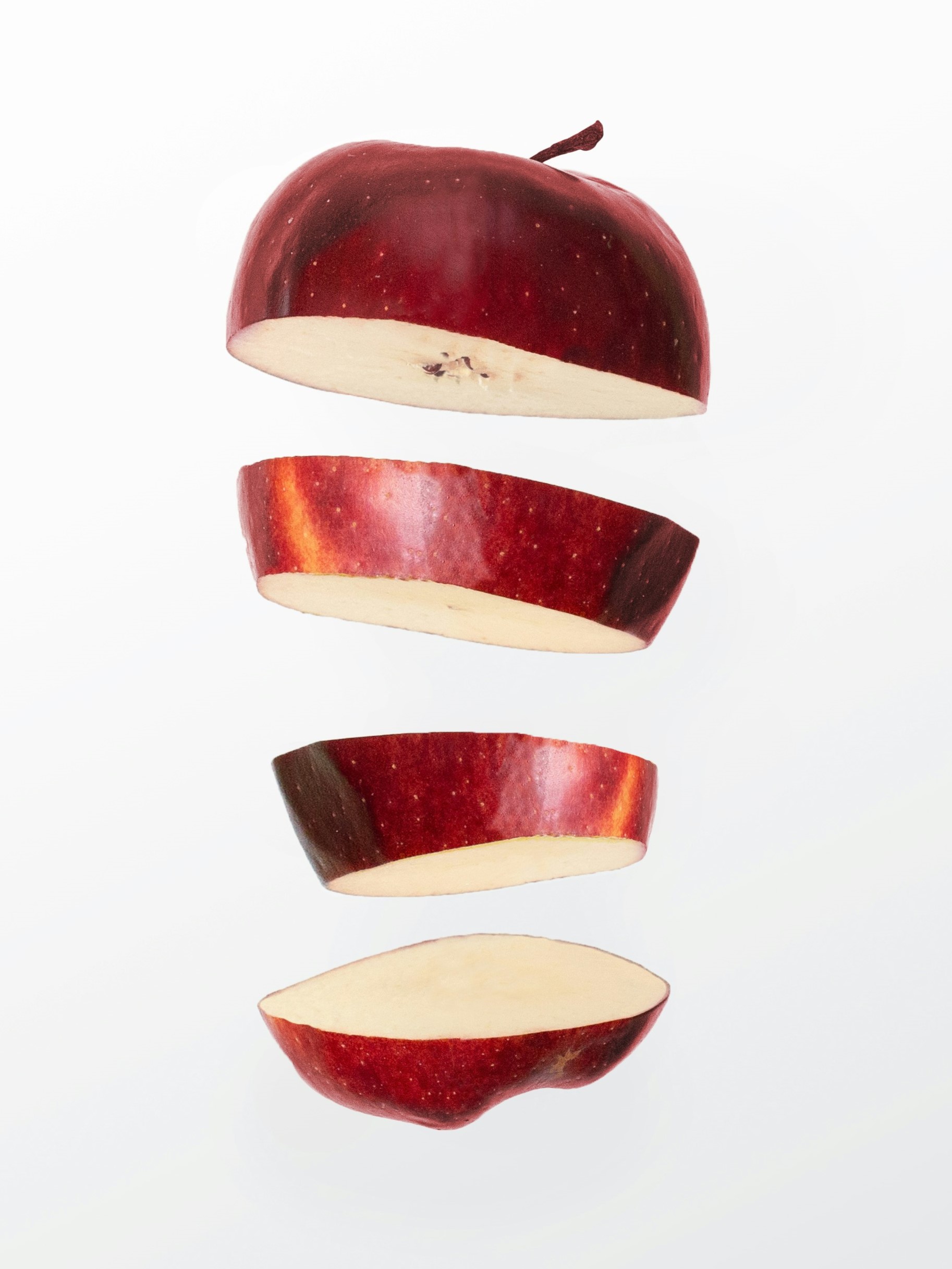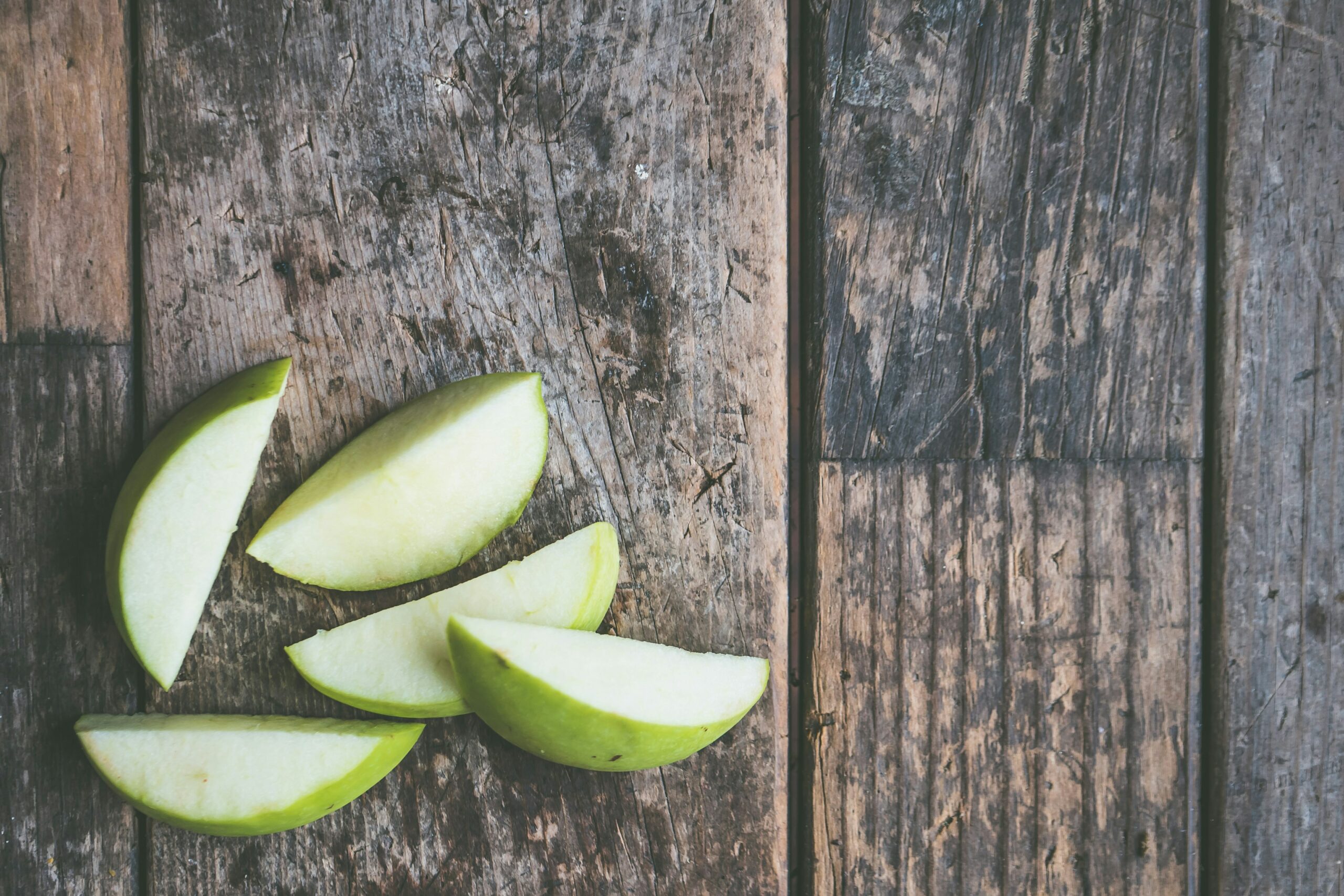Writer: Barbara Mack
There isn’t a shred of evidence. There’s no proof whatsoever. No one knows who started the nasty rumor. No one knows what fruit it was that poor, benighted Eve offered Adam. Genesis tells us it was the fruit of the tree of knowledge, and some poor blighter, who couldn’t paint a pomegranate or a plum, decided it had to have been an apple.
Alas, we’ve been taking apples for granted ever since.
They aren’t curious and new, as are carambola (starfruit) or kiwi. They aren’t delicate and perishable, as are raspberries or figs. And because they’re available year-round (even if they were harvested last September), we treat them with far too little respect.
But it’s time, truly time, to get to know your apples.
Apples have been our companions for millennia. The fruit probably originated in what is now Kazakhstan, and the apple’s taste and longevity made it a natural traveling companion. Fruits from seeds in apple cores began to sprout in China, Syria, Turkey, Greece and Rome. Apple fragments have been found in Iron Age settlements in Switzerland.
The Romans loved apples; historian Pliny the Elder described 20 varieties of apples growing in Roman orchards. The Roman army took apples on its conquests, and apples were growing in Britain by the first century.
Colonists brought apples to America in the early 1600s, and Thomas Jefferson was breeding apples at Monticello in the late 1700s.
It’s because they’re perfect. Truly perfect.
Apples are a fine snack. They should be tucked in every lunch bag, box or bucket. Schools and employers should be giving them to students and employees and charging $5 for a candy bar.
Some thoughtful people do give away apples. The Gateway Hotel and Conference Center in Ames keeps bowls of Granny Smith apples around the premises, inviting guests to have a better nighttime snack than cookies.
Even the apples available in June and July, which were likely harvested the previous fall, still have good nutritional value and fiber. But now … yes now …
 This year’s apple harvest is about to begin.
This year’s apple harvest is about to begin.
In lowa, we’re lucky. In a few weeks, one of the hottest new “eating” apples in the nation will begin popping up on grocery store shelves.
Back in the 1960s, scientists at the University of Minnesota began working on the Honeycrisp, but the seedlings weren’t released for public sale until 1991. It took time for the trees to mature, and Honeycrisps have only gradually been finding their way to stores. The apples are still grown mostly in Minnesota and Wisconsin. They’re difficult to grow, but the apples are huge, unbelievably crisp and delicious. They’re perfect by themselves, and with a tiny dollop of slightly runny, warm brie atop a slice of Honeycrisp … heaven!
But that’s just the beginning. Apples lend a perfect sweet note to savory dishes. Warner Jackson, a talented local cook with deep Georgia roots, loves to sauté a mix of potatoes, apples and onions, and likes it even better if some well-seasoned sausage is crumbled into the mix.
“I think people underestimate the complexity that’s created by combining fruit and meat. It creates a depth of flavor that’s not easy to come by,” he says.
The classic pairing is pork with apples, but please don’t pour applesauce over your lowa chop. It’s an insult to both of them.
You’re guaranteed rave reviews for pork loin flavored with apples and nuts. Spice the roast with salt, pepper and a hint of garlic, coat it well with apple jelly and roll it in finely chopped hazelnuts. Cook it on a bed of apple slices (to prevent the nuts from burning and sticking). When the roast is done, lift it from the pan and allow it to rest for 15 minutes. Discard the apple slices, then deglaze the pan with Calvados (apple brandy). When the juices have reached a nice consistency, drizzle them over your sliced roast. Darned tasty.
On that first frosty fall day (yes, it’s coming), tuck acorn squash halves filled with apples, raisins, cinnamon, cloves, nutmeg and a hint of cardamom in the oven alongside your first beef roast of autumn. Yes, you can add butter and brown sugar if you must, but do you really need to? Juicy baking apples will give off lots of sweet goodness.
By the way, if you’re feeling brave, tuck a few whole cloves into your beef roast, too. Dutch spice traders brought cloves, nutmeg and cinnamon to Holland in the 1500s and used those spices to flavor meats as well as baked goods. Here’s a bit of Des Moines trivia:
“Kruidenier” means “spice trader” in Dutch, according to my former boss, David K. Next time you’re on the walking trail around Gray’s Lake, think of David and Liz.
And you might need to be burning a few calories on that walking trail if you succumb to one of the best pairings in all of cookery: apples and caramel.
Apples are the perfect dessert. You can be saintly — a simple baked apple is a treat — or truly sinful.
One chilly September evening, our dear friend Tim Eakins came for an impromptu, collaborative dinner. He brought Granny Smith apples, pound cake and whipping cream to contribute to the board.
We came up with a dessert that l’ve come to think of as “better than bananas Foster,” and which we denominated “The Dessert.” It starts with a slice of pound cake, sprinkled with Grand Marnier orange liqueur, at the bottom of each dessert bowl. Atop that is perched a scoop of great vanilla ice cream, and over the ice cream is poured apples — sautéed until crisp/tender – and coated in warm, homemade caramel sauce, flamed with warmed Grand Marnier. Surround the caramel apples with a moat of very cold, very lightly whipped cream. It may not make the American Heart Association cookbook, but it’s been a beloved fall dessert — and my idea of a caramel apple — for more than 20 years. Who says you can’t mix apples and oranges? The recipe is shared willingly, but gosh … experiment on your own! Apples are very, very forgiving.
However, fair warning: Choosing the right apple isn’t quite as easy as it looks. Some apples that are delectable when eaten out of hand turn into mealy mush in the oven. Some bake well — except in pies, when their juiciness turns an apple pie into watery muck.
There are more than 2,000 varieties of apples — far too many for a species for us to be satisfied with the six or eight varieties in the supermarket. They’re good, sure. But visit your local farmers markets and learn about apples.
Better still, for the perfect fall outing, visit one of lowa’s pick-your-own orchards and let your children roam through the trees. Many orchards offer hayrides and pumpkin picking. Children have a ball, and learn that food doesn’t have to come coated with wax. At Deal’s Orchard in Jefferson, weekends are wild in September and October, when the apple press is making cider and apiarists Curt and Randy Bronnenburg from Perry bring in an observation hive so children can learn how bees pollinate apple trees, and so much else of what we eat.
Jerald and Cindy Deal have raised their boys amid the fruit trees that have been the family home since Jerald’s grandfather started the orchard in the 1930s. Cindy’s favorite pie apple? “A Jonathan,” she says, decisively. “It’s both sweet and tart and it holds its shape when cooked.”
And its cousin, the Jonagold, is among her favorite apples for eating out of hand. “If I had my choice between a Honeycrisp and a fresh, ripe Jonagold, I’d pick the Jonagold. They don’t keep as well, but right off the tree, they’re perfect.”
lowa’s modern orchards are part of the return to our healthful and historic past. Way back in 1842 — four years before lowa became a state — Jacob Faeth emigrated from Germany and planted an apple orchard around his home just west of Fort Madison. More than 150 years later, his great-great-grandsons and their families grow more than 50 heirloom apples in what historians believe is the oldest orchard west of the Mississippi.
In 1872, Jesse Hiatt, a farmer from Peru, lowa, in Madison County, found an apple tree that appeared to be a “sport,” or an unintended cross, from the trees he’d planted. The little volunteer produced glorious yellow apples, blushed with crimson, that were a perfect balance between sweet and tart. He entered the apples in a contest, where the apples were pronounced “delicious!” and the name stuck.
Too bad Jesse sold his hybrid. Millions of trees and a half-century later, Red Delicious and Golden Delicious apples were being bred for everything except taste. People were drawn to the ruby or canary color. Grocers liked the thick skin that enabled the apples to be shipped long distances and stored for months. Flavor was all but irrelevant, and now, unfortunately, most store-bought Delicious apples aren’t delicious at all. Most are tasteless and mealy. Sigh.
But Cindy Deal gave me hope: “If you love a sweet apple, then a Red Delicious, grown in good lowa soil and eaten when it’s fully ripe, is as wonderful a sweet apple as you’ll ever taste.” Jesse Hiatt would be proud. Visit your local orchard. Soon.
And there are hundreds of varieties grown right here in lowa that are waiting for you to discover them. Try a Cortland, or a Northern Spy, or a Pippin, or a Winesap, or a Rome Beauty or a Chieftain. There aren’t any bad apples in this bunch.
We need to have an awakening that’s right up there with Newton, who began to understand gravity when he tried to understand why an apple fell on his head while he was napping in his orchard.
Let taste be your guide

All apples have a mixture of sweetness, tartness, tannin and juiciness. Some people love the tartness of a Granny Smith, eaten out of the hand, while others think they’re only good for pies, where the tartness is balanced by added sugar. Look for firm apples that still have the fresh scent of the sunny orchard.
Beyond that, let taste be your guide.
Making classic apple pie, apple strudel, or tarte tatin (French apple tart)?
TART APPLES: Granny Smith, Macoun, Northern Spy. All will need sugar.
SWEET/TART BALANCE: Jonathan, Jonagold, Winesap, Stayman, Pippin.
SWEET: Golden Delicious (from local growers only), Fuji, Rome Beauty A good idea for pie is to blend more than one kind of apple to cut down on the sugar you need and to add depth of flavor.
AVOID: Cortland, Red Delicious or McIntosh in pies. You won’t like the texture.
Eating out of hand, on a cheese board or with some wine?
ALL EXCELLENT: Braeburn, Cortland, Fuji, Gala, Golden Delicious, Honeycrisp, Pink Lady.
Baking by themselves, or with yams, squash, potatoes, or parsnips?
Arkansas Black, Braeburn, Rome Beauty, Pippin, Chieftain, Northern Spy.









